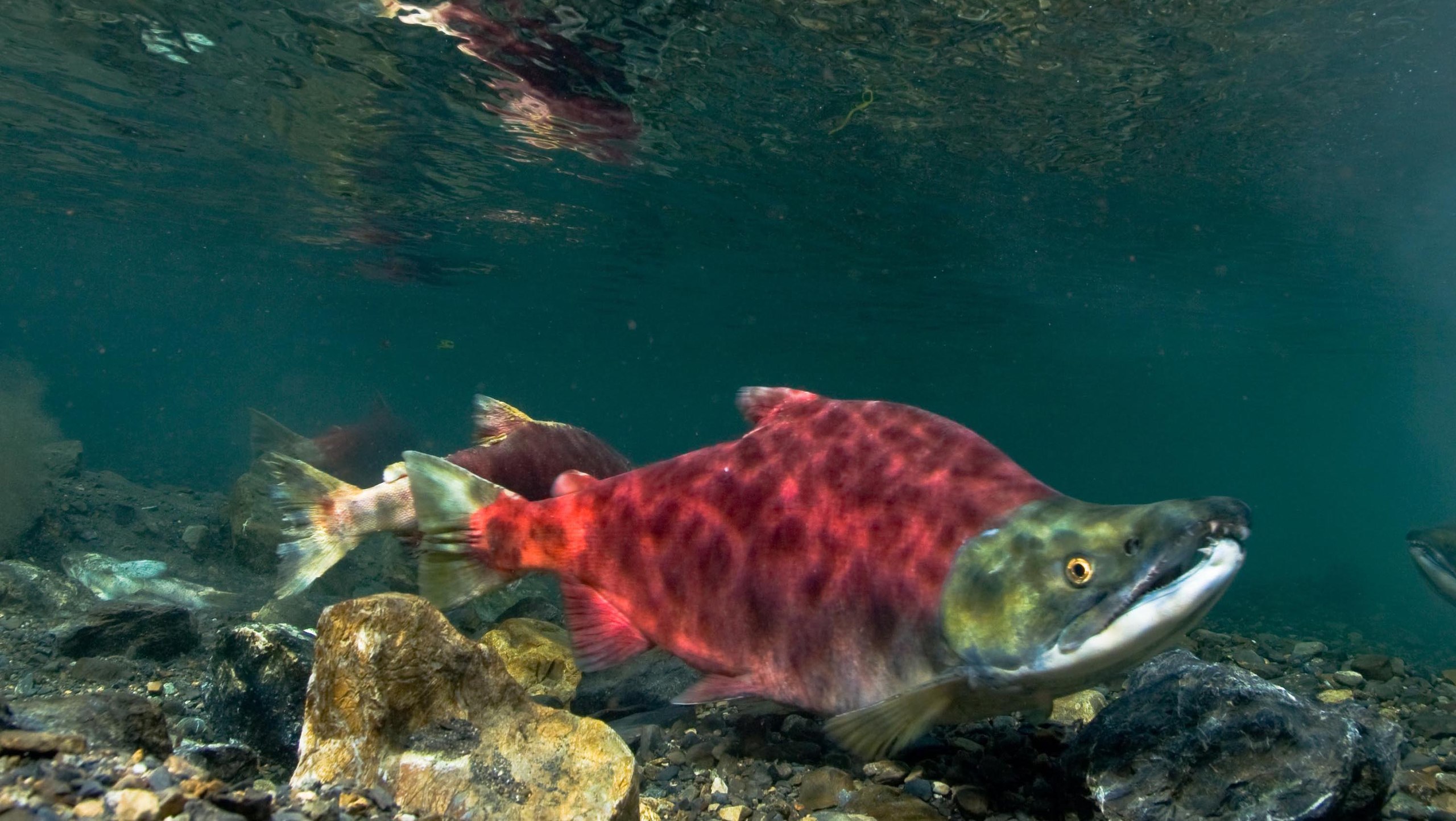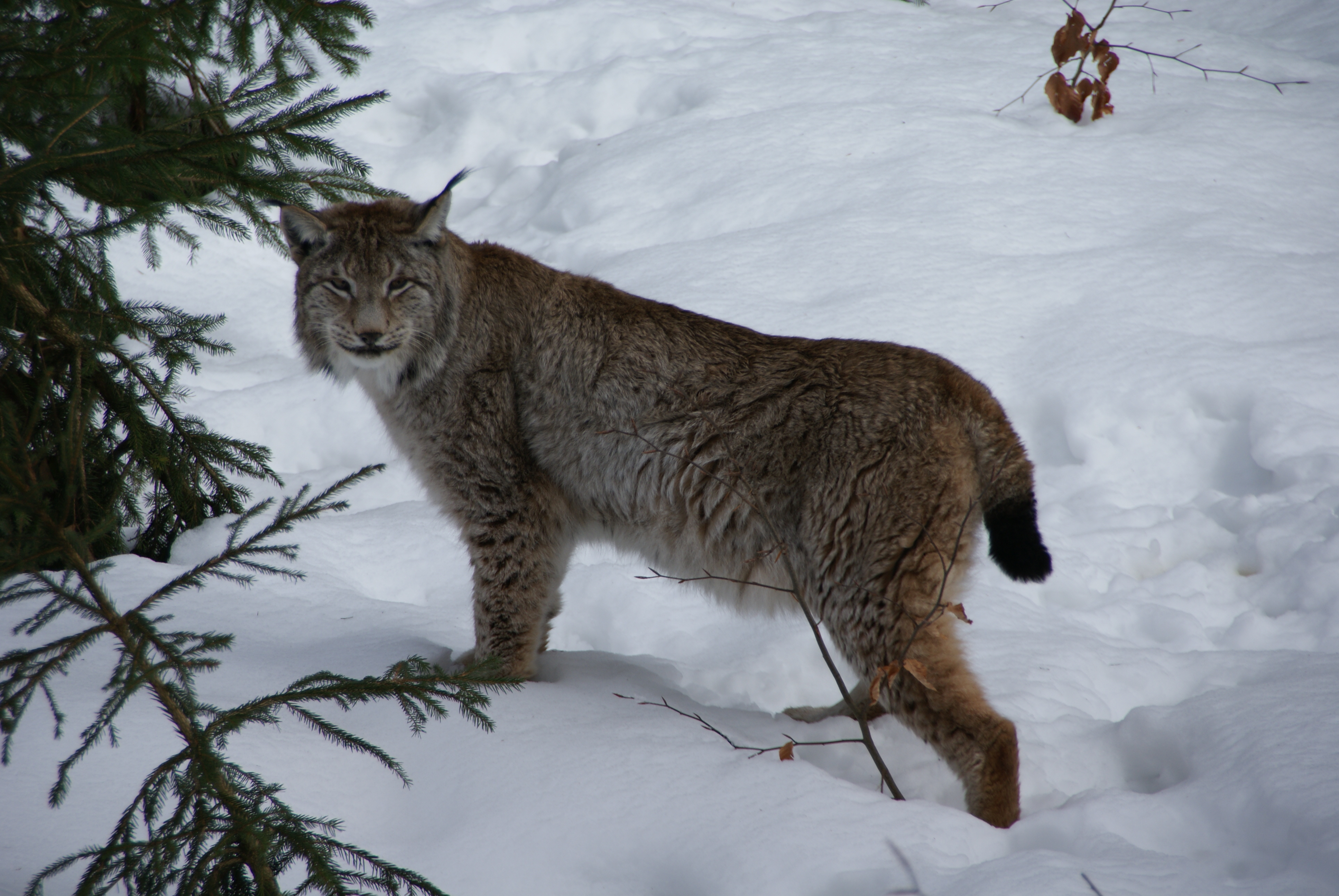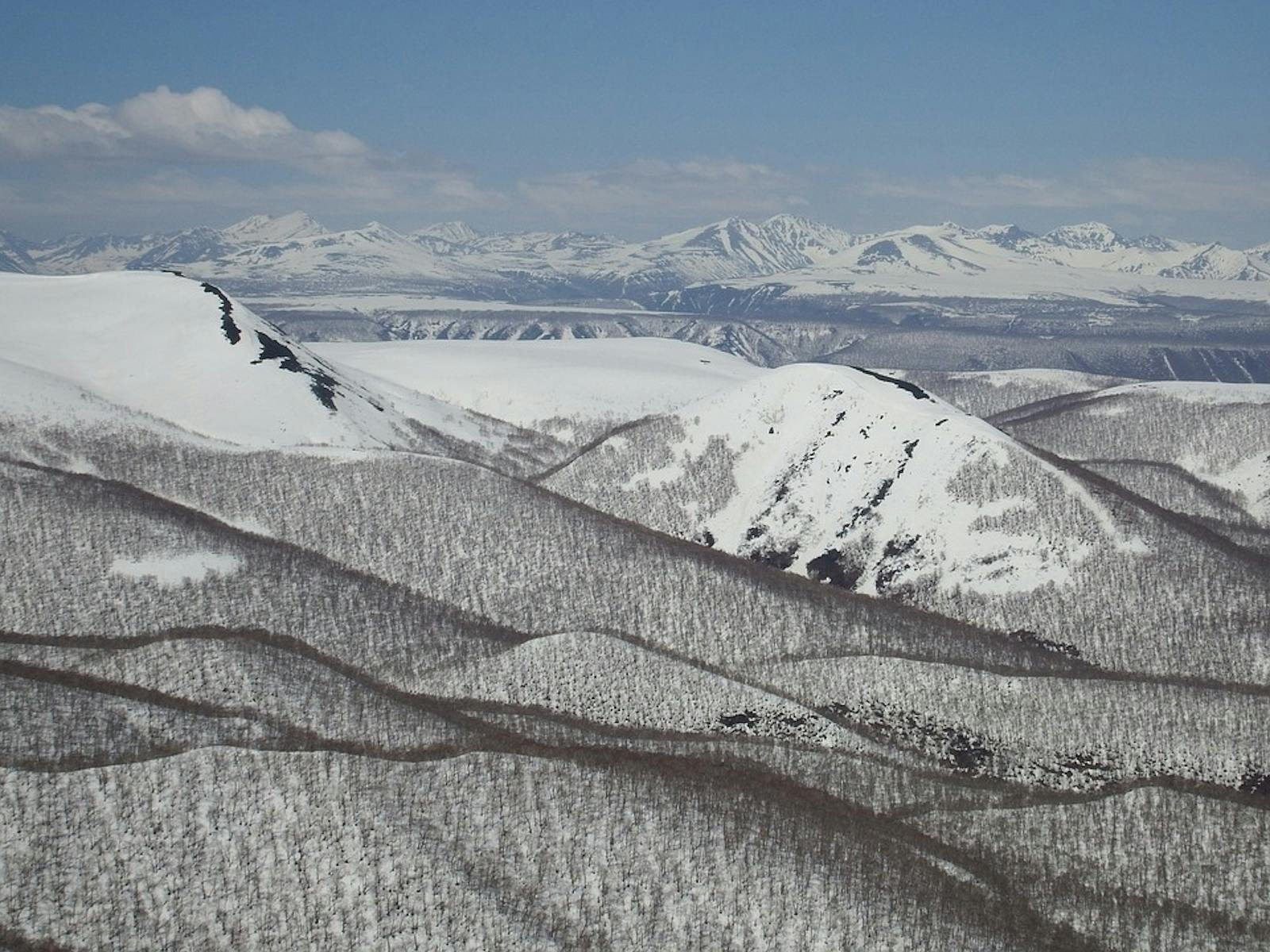Kamchatka Taiga
The ecoregion’s land area is provided in units of 1,000 hectares. The conservation target is the Global Safety Net (GSN1) area for the given ecoregion. The protection level indicates the percentage of the GSN goal that is currently protected on a scale of 0-10. N/A means data is not available at this time.
Bioregion: Sea of Okhotsk Coastal Taiga, Meadows & Tundra (PA6)
Realm: Subarctic Eurasia
Ecoregion Size (1000 ha):
1,526
Ecoregion ID:
712
Conservation Target:
74%
Protection Level:
2
States: Russia
Specific climate conditions in the Central Kamchatka Depression have allowed the development of an island of taiga forest, rich with a genetically distinct population of Yeddo spruce alongside Dahurian larch and Asian white birch. The largest brown bears in the world live here, gorging themselves on the salmon that return to the rivers to spawn each year, whilst snowcapped volcanoes loom above.

The flagship species of the Kamchatka Taiga ecoregion is the sockeye salmon. Image credit: Creative Commons
Between the Sredinny Mountain Range and the Vostochny (Eastern) Ridge, lies the Central Kamchatka Depression. Here, the Kamchatka River flows from south to north before veering east towards the coast. The Yelovka River rises in the Sredinny Mountains and flows south to join the Kamchatka just as it turns east. It is these river valleys that shape the Kamchatka Taiga ecoregion.
The eastern edge covers part of the famous Klyuchevskaya Sopka volcanic complex, including the Ushkovsky, Tolbachik, Zimina, and Udina volcanoes. Much of the ecoregion is in the zone of discontinuous permafrost, with 50–90% of the ground permanently frozen, although this is complicated by the volcanic activity of the area. The climate here has a more continental feel and less precipitation than the rest of the Kamchatka Peninsula. The average annual temperature is -0.8°C (monthly averages of -16.1°C-14.6°C). The mean annual precipitation is around 635 mm.
.jpg)
Grey wolf. Image credit: Anders Illum, Creative Commons
In this ‘conifer island’ ecoregion, intermittent pure stands of Yeddo spruce are found up to elevations of 350 m. Although this is a relict tree population, with considerable genetic differences compared to the closest mainland examples, the expansion of conifers in the Central Kamchatka Depression only occurred during the last millennium. Mixed forests of Dahurian larch and Asian white birch extend over most of the ecoregion.
At higher elevations, spruce is replaced by Erman's birch forest. Manchurian alder, and Mongolian poplar; sachalin willow grow along the rivers and in wet areas. Forest floors here are covered in shrubs such as alpine cranberry, prickly rose, and redcurrant, herbs such as may-lily, small twistedstalk, Lapland cornel, and the endemic Saussurea pseudotilesii. Northern buckler fern, beech fern, and Diplazium sibiricum are also characteristic. There are areas of very tall-growing meadow species such as Scandinavian small-reed and French-willow.
Kamchatka is famed for its population of enormous brown bears, often found in and around riverbeds, where they gorge on salmon before the winter. The black-capped marmot lives in grassy areas of the ecoregion, burrowing deep to avoid the permafrost during hibernation. Grey wolf, lynx, and otter are also supported. Osprey utilize the ecoregion’s fish-rich rivers and lakes. Steller's Sea-eagle, northern goshawks, boreal owls, and vulnerable rustic buntings nest in the conifer forests. Grey-tailed tattlers nest on the pebbled shores of rivers, streams and Lake Kharchinskoe. The Kamchatka river is a major spawning ground for sockeye and chinook salmon.
Only an estimated 23% (3,500 km2) of Kamchatka’s conifer region remains undisturbed by logging or recent fire and it has been argued that the domination of Yeddo spruce has been overstated in the past. There is little evidence of former spruce forest and the name of the indigenous people of the area, Esso, is derived from the indigenous name for larch trees. The majority of the Kluchevskoy Regional Nature Park component of the Volcanoes of Kamchatka World Heritage Site is within the bounds of this ecoregion, along with two lake reserves. There is no protected area specific to the spruce, birch, and larch forests.

Eurasian lynx. Image credit: Creative Commons
The ecoregion is under pressure from increased availability of helicopter access, all terrain and off-road vehicles, and snow mobiles. Bear numbers have dropped due to hunting and poaching is a continuing issue. The Kamchatka River sockeye salmon population are deemed endangered due to increased fishing and habitat disturbance.
The priority conservation actions for the next decade will be to: 1) prevent illegal fishing of salmon species; 2) increase protection for the remaining Yeddo spruce forests; and 3) improve enforcement to prevent and stop poaching.
Citations
- Jones, V. and Solomina, O. 2015. The geography of Kamchatka. Global and Planetary Change. 134, pp.3-9. https://doi.org/10.1016/j.gloplacha.2015.06.003.
- Joint Research Centre of the European Commission. 2019. The Digital Observatory for Protected Areas (DOPA) Explorer 4: Khangai Mountains conifer forests. [Online]. [Accessed 25 November 2019]. Available from: https://dopa-explorer.jrc.ec.europa.eu/ecoregion/80512
- Krestov, P.V., Omelko, A.M. and Nakamura, Y. 2008. Vegetation and natural habitats of Kamchatka. Berichten der Reinhold-Tüxen-Gesellschaft. 20, pp.195-218.

.png?auto=compress%2Cformat&w=300)
